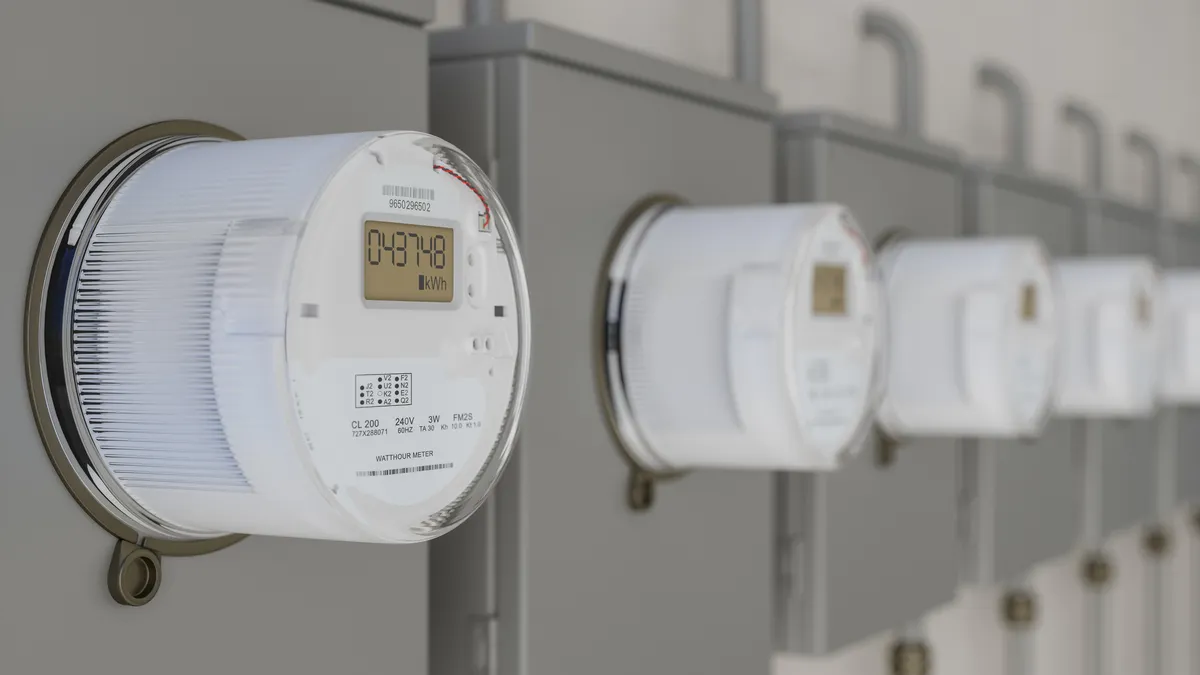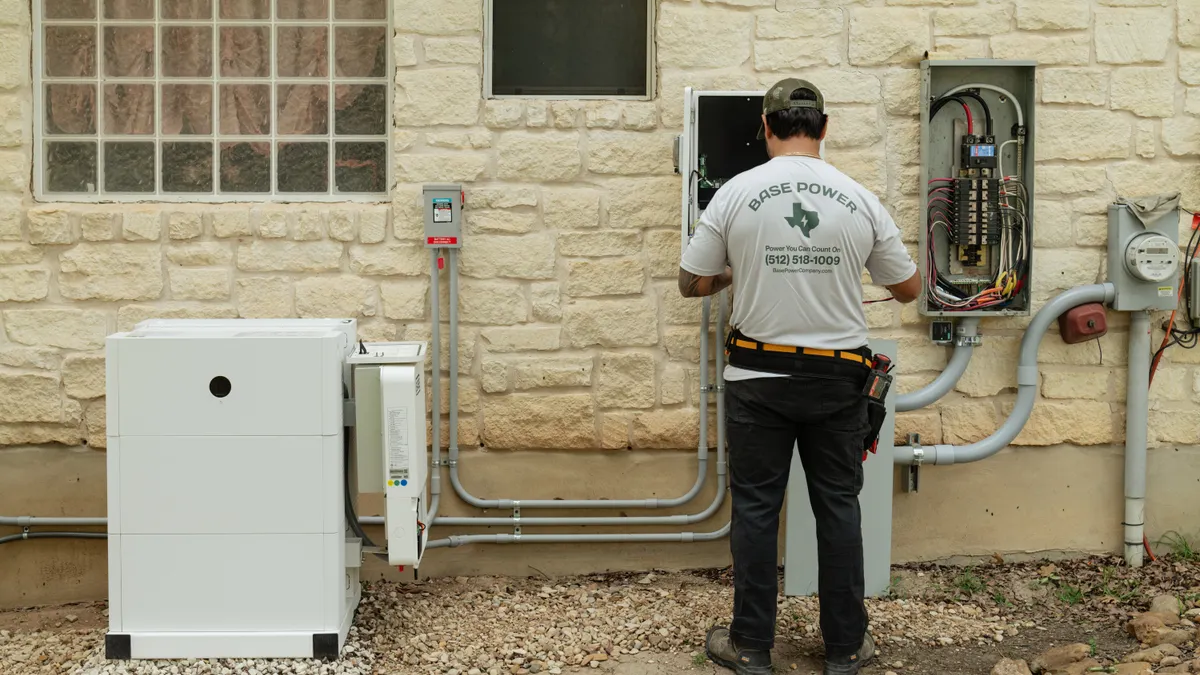Utilities must prepare for more distributed energy resources on the grid, including by making targeted investments and factoring in DER uptake in integrated planning, a white paper issued Tuesday by Ernst & Young and GridWise Alliance said.
But for that to occur, utilities would need to embrace changes in traditional utility models to enable interconnection, facilitate new distribution services and encourage the development of non-wires alternatives, the paper said.
Representatives from the Edison Electric Institute, Eversource Energy, Exelon Corp and San Diego Gas & Electric discussed a number of themes from the report at a panel for GridCONNEXT in Washington, DC, on Tuesday.
Despite varying levels of experience with DER, one thing was clear among utilities: "even the ones on the leading edge of asset management are not happy with where they are," Jeff Miller, EY US power and utilities strategy leader, told the GridCONNEXT audience.
Unlocking DER potential for distribution utilities
For utilities to take advantage of high-level penetration of DERs, they need DER management capabilities: DER Management Systems (DERMS) or Advanced Distribution Management Systems (ADMS). The latter would offer real-time system optimization, and better forecasting and modeling. These programs enable flexibility in the distribution system and, according to EY, are a step to allowing ancillary DER services managed at the distribution-level to compete in markets.
DER has already grown so much in the last decade, the resource is expected to "emerge of significant scale and scope to support the larger transactional volumes that will be needed to enable a truly digital and decentralized energy marketplace" by 2030, the white paper said.
With state and utility-specific decarbonization goals coming to bear in 2030-2050, including a move to electrification in the transportation and building sectors, "the utilities have a lot of opportunity to make money in the future from that load growth," Dana Hanson, EY Americas power and utilities leader, told Utility Dive in an interview. "I think getting between now and 2030 is navigating that regulatory construct, to make sure that the right investments are made in things like ADMS or DERMS."
To control distributed assets through ADMS or DERMS, the utility needs to "maintain the trust of everyone interacting with that platform," Roger Kranenburg, energy strategy and policy VP at Eversource Energy, said on the GridCONNEXT panel.
"Establishing the interconnection standards for the benefit of the overall system, that's one of the things that we've learned," Kranenburg said, referencing the development of wholesale markets.
Combined cycle gas plants and wind generation both developed from simply generating electricity, to doing "generation control and reactive power," when operators told them "'you're a bigger and bigger part of the system, you have to interact with the system,'" he said. Similar lessons are being had in DER, as the utility maintains the role to be a "network hub," he added.
As the white paper highlights, distributed resources are becoming increasingly cost competitive with grid-supplied energy, especially in the Western region, but utilities have a lot of options to actively participate with DERs.
"If you can control someone else's assets, if you can earn on them appropriately, so that financially you're in the same position as you were before" when utilities owned assets," and you can deliver the same reliability, resiliency, then you don't necessarily have to have ownership of the assets," Susan Mora, Exelon's director of utility initiatives, said on the panel.
Separate from the report, many research groups have worked to think through effective DER planning and, with that, efficient distribution system upgrades.
The Electric Power Research Institute (EPRI) had not seen EY's white paper but suggested distribution planning could be targeted at areas with the most DER growth to help utilities accommodate changes in the near term.
"While grid upgrades to enable and accommodate distributed energy resources (DER) are occurring at the required pace, there are many opportunities for cost savings in the future," Haresh Kamath, senior program manager for DER at EPRI, said via email. "In the first place, it may be possible to guide DER placement so that impact is minimized, reducing the cost of upgrades," which is being put into practice in some jurisdictions.
Hanson thinks that approach is possible if utilities are making the initial investment for DER deployment, but it's harder to control consumer-led deployment.
Methods to reduce grid impacts and enhance operation "may become available in the next three to five years" through "sophisticated software algorithms to orchestrate DER operation in real time," Kamath said.
Starting stakeholder engagement
"The utility must be in a position to be able to facilitate all those products and services that customers are going to be demanding as we continue to advance in the DER journey," Omar Al-Juburi, EY Americas power and utilities digital grid leader, said at GridCONNEXT on Tuesday.
DER discussions are taking place very unevenly throughout the country, based on wherever levels of higher penetration occur, according to Edison Electric Institute's Lola Infante, senior director of clean energy technology and policy. However, per EY and GridWise, utility participation in early-stage discussions is key.
"The utility has a unique opportunity to be at the exact center of all this" early on, Al-Juburi added.
"We can't predict right now the exact role of the utility" as regulators will determine that, he said. "However, the utility has an opportunity by making those targeted investments to really be at the forefront of this by owning the platform, owning the data and at a minimum to be facilitating commercialization of the distribution system."
"From DERMS and ADMS, from our perspective, those rate cases have been supported and moving forward," Hanson said.
Utilities are "becoming more cognizant of the conversations that must occur perhaps before you ever get into a regulatory proceeding," Exelon's Mora said during the Tuesday panel. Information sharing needs to take place "before you get into a hostile intervenor kind of litigious type of engagement," she added.
"The first few times you do that stakeholder engagement, it's challenging, but it becomes something you see the value in of pre-negotiating a lot of those conversations with stakeholders."
"A lot of third parties will be interacting with the utilities... that will continue to be worked out over the next number of years," EY's Al-Juburi said.





















